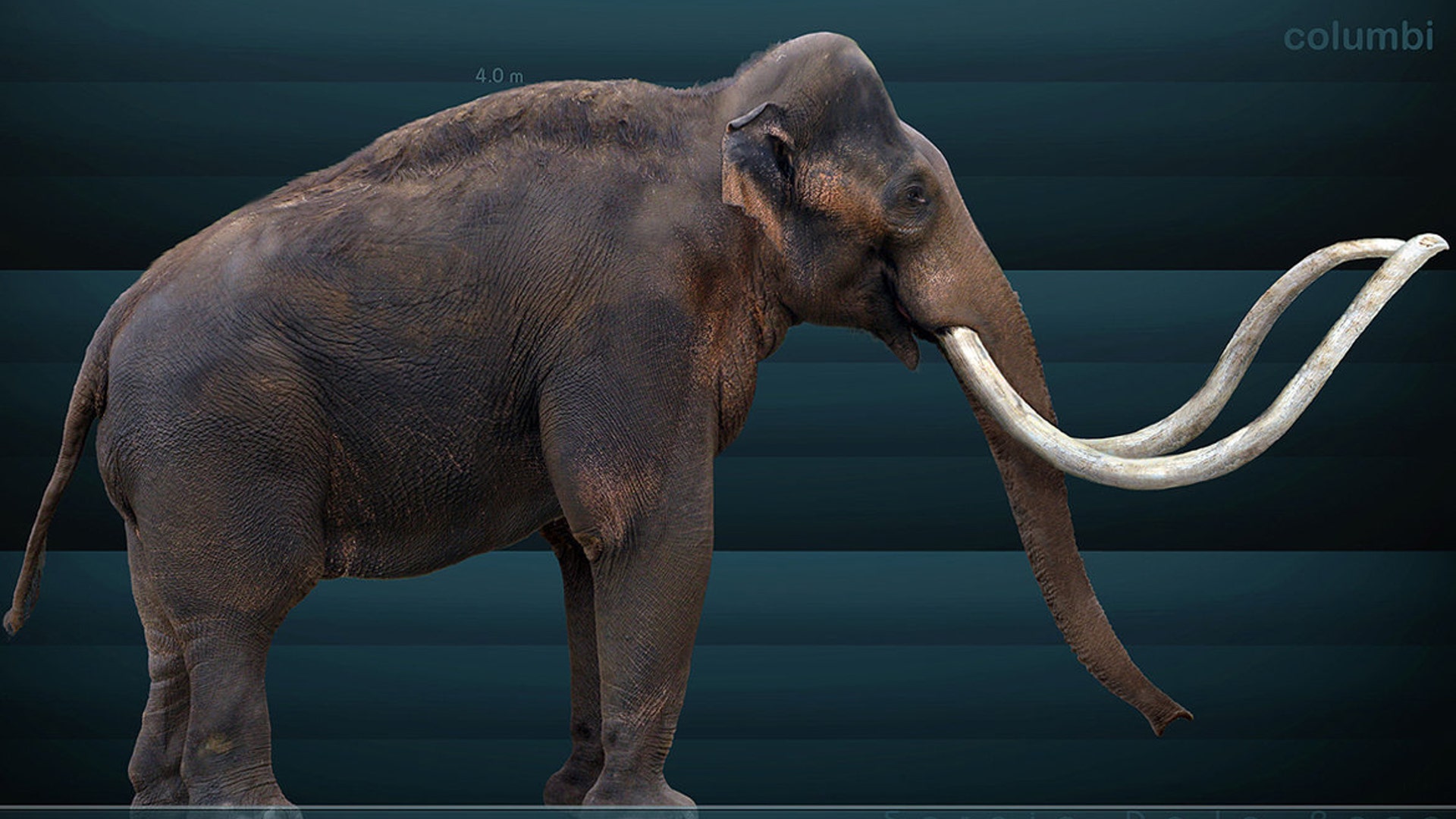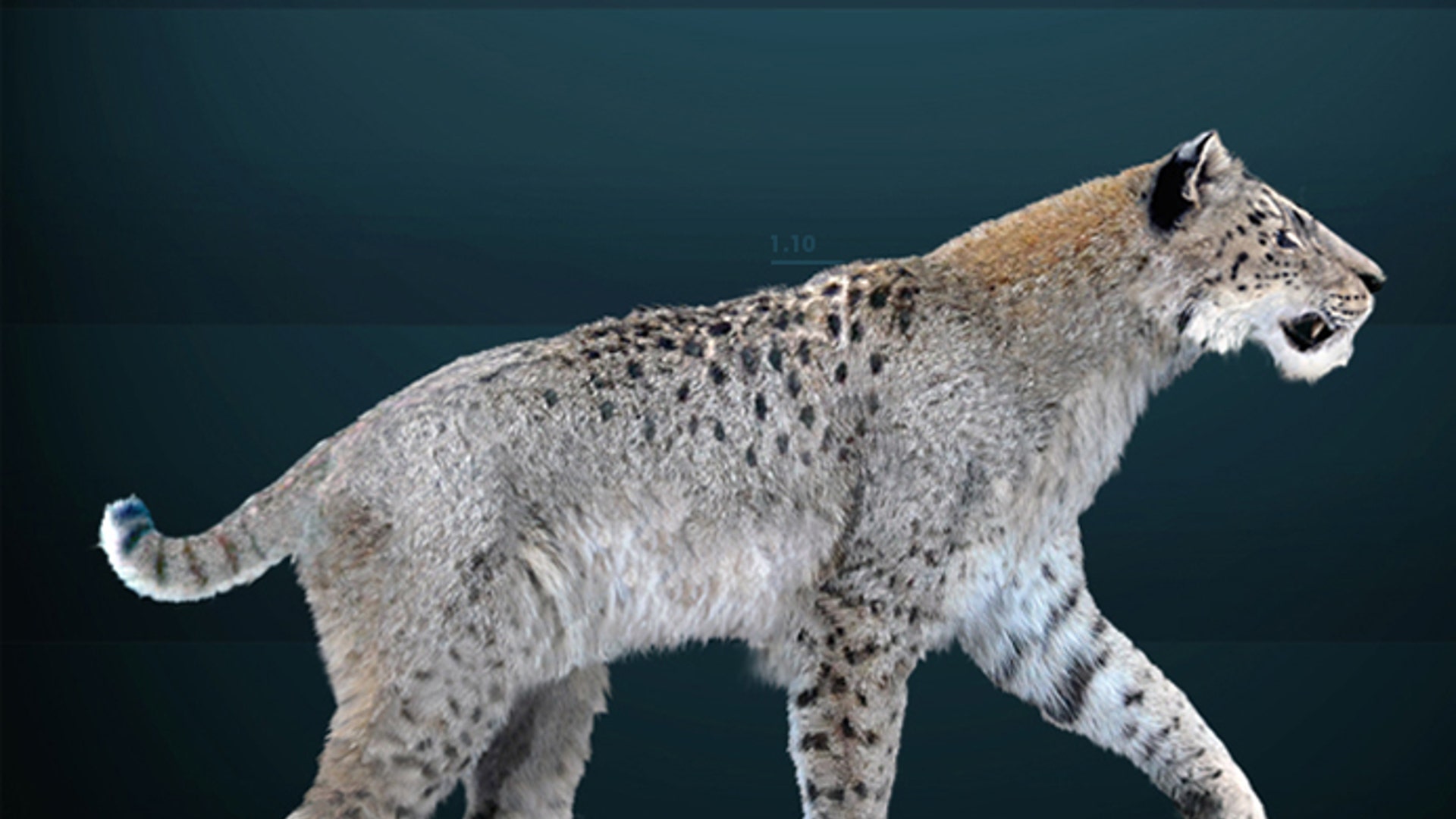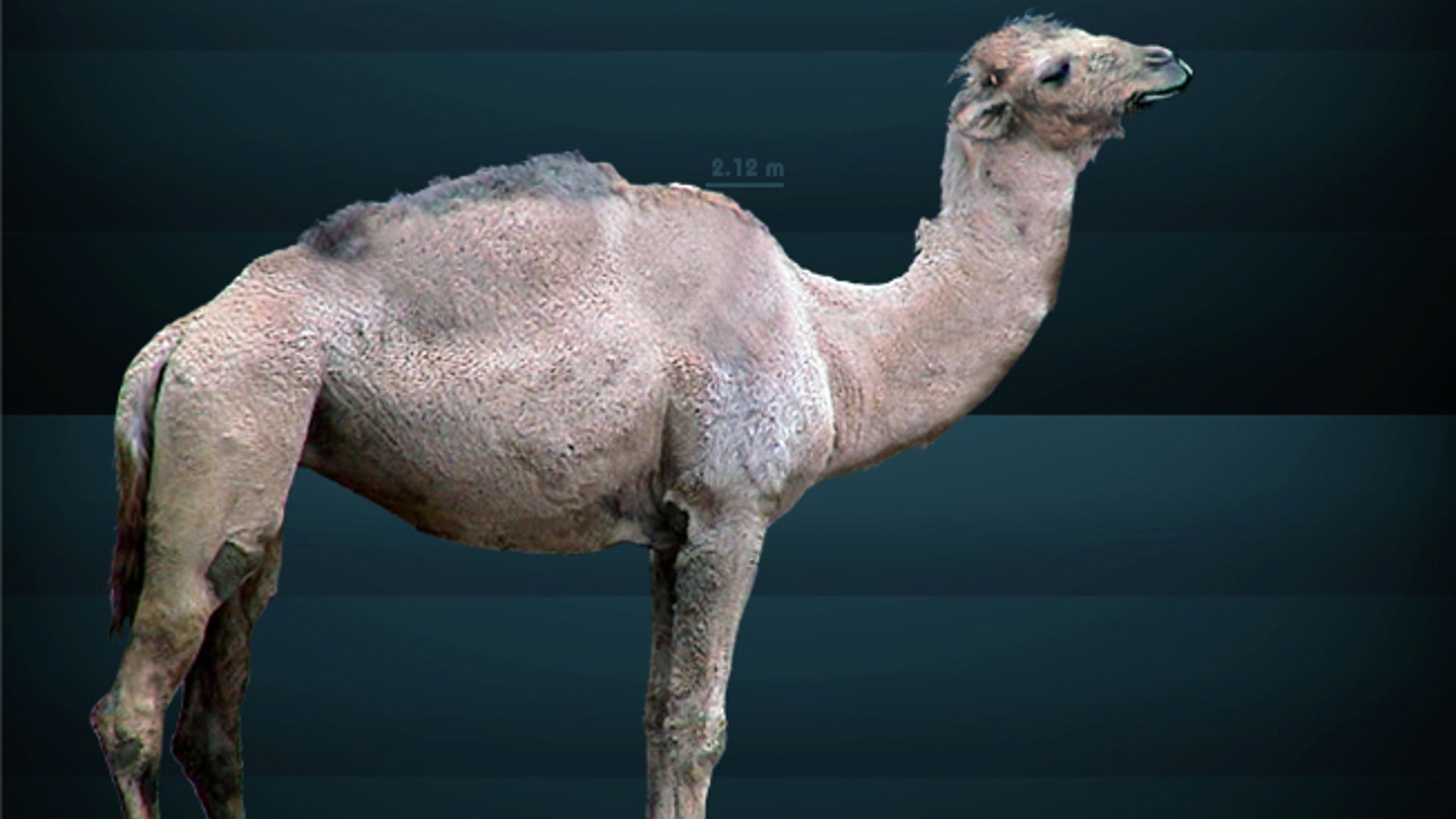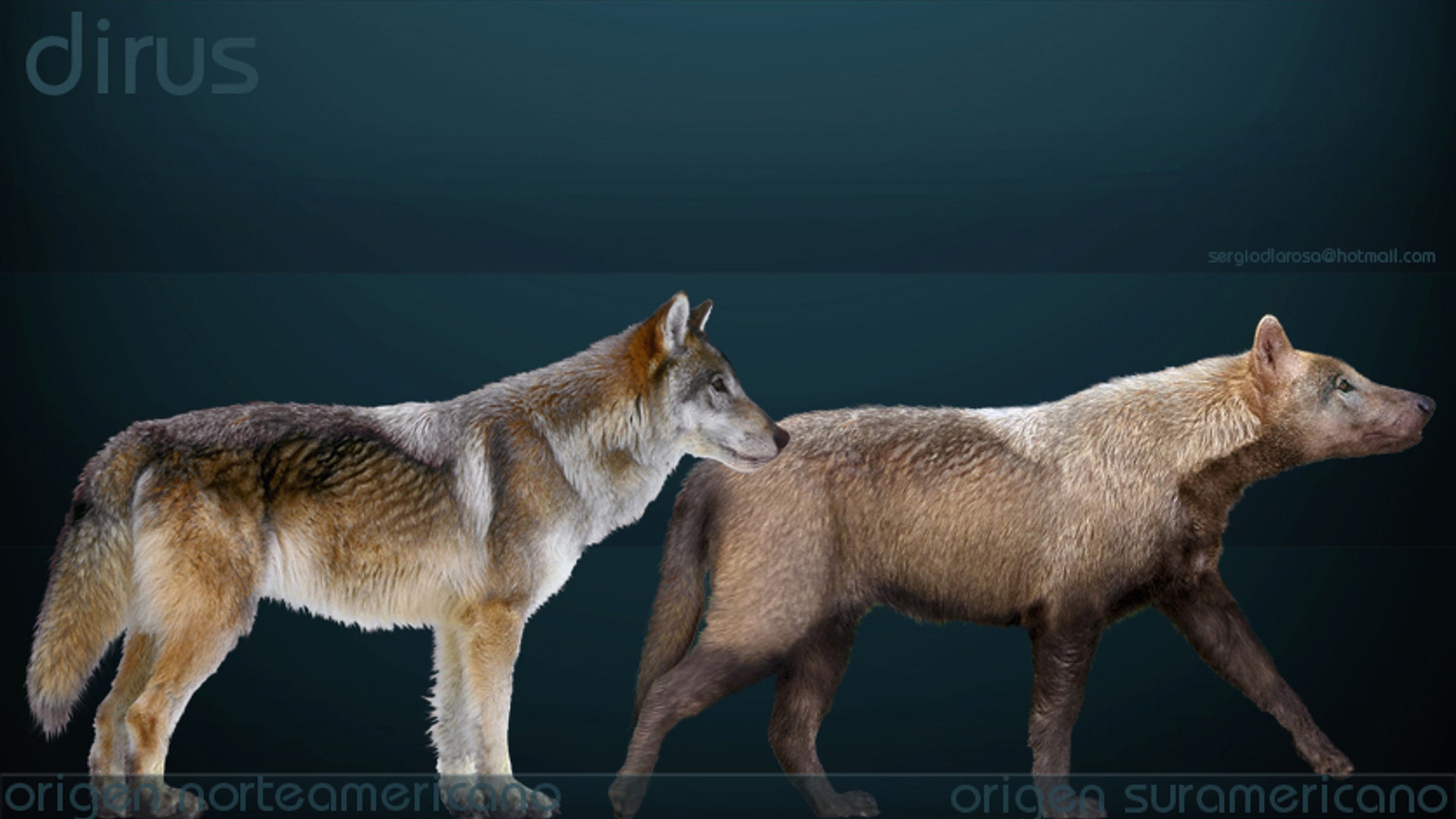Move Back
ADVERTISEMENT
Skip- Published10 Images
Giant Ice-Age Mammals Brought to Life
A treasure trove of fossils was recently discovered in Snowmass, Colo., along with insects and flora of the period. An artist's reconstructions give a very realistic portrait of how the giant mammals that roamed North America 12,000 years ago may have appeared.
![Megafauna of the Pleistocene]() 12,000 years ago, giant megafauna with exotic names like the scimitar cat, dire wolf, and columbian mammoth lumbered across the North American continent. With the help of Thomas A. Demere, curator of the paleontology department at the San Diego Natural History Museum, we walk through one artist's reconstructions of just what those long gone critters may have looked like.read moreSergio De la Rosa MartinezShare
12,000 years ago, giant megafauna with exotic names like the scimitar cat, dire wolf, and columbian mammoth lumbered across the North American continent. With the help of Thomas A. Demere, curator of the paleontology department at the San Diego Natural History Museum, we walk through one artist's reconstructions of just what those long gone critters may have looked like.read moreSergio De la Rosa MartinezShare![American Mastodon]() Mammut americanum (American mastodon) The American mastodon is an extinct, distant cousin of living elephants, Demere explains. "Unlike elephants and the closely related mammoths, mastodons probably lived along stream courses and ate tough riparian vegetation." Remains of this species were reportedly found at the Snowmass Village excavation. "The digital art image appears to be anatomically accurate and captures the essence of the animal, especially the low position of the shoulders and elongated head, Demere said.read moreSergio De la Rosa MartinezShare
Mammut americanum (American mastodon) The American mastodon is an extinct, distant cousin of living elephants, Demere explains. "Unlike elephants and the closely related mammoths, mastodons probably lived along stream courses and ate tough riparian vegetation." Remains of this species were reportedly found at the Snowmass Village excavation. "The digital art image appears to be anatomically accurate and captures the essence of the animal, especially the low position of the shoulders and elongated head, Demere said.read moreSergio De la Rosa MartinezShare![Columbian Mammoth]() Mammuthus columbi (Columbian mammoth) The Columbian mammoth is an extinct cousin of the living Indian elephant, and the other find at Snowmass that so excited the paleontologists from the Denver Museum of Science. "The digital art image appears to be anatomically accurate," Demere said, "and includes the large domed skull, and long tusks of this species. The small ears are in keeping with fossil evidence (frozen wooly mammoth carcasses) that suggest mammoths had small ears like living Indian elephants -- and not the much larger ears of African elephants."read moreSergio De la Rosa MartinezShare
Mammuthus columbi (Columbian mammoth) The Columbian mammoth is an extinct cousin of the living Indian elephant, and the other find at Snowmass that so excited the paleontologists from the Denver Museum of Science. "The digital art image appears to be anatomically accurate," Demere said, "and includes the large domed skull, and long tusks of this species. The small ears are in keeping with fossil evidence (frozen wooly mammoth carcasses) that suggest mammoths had small ears like living Indian elephants -- and not the much larger ears of African elephants."read moreSergio De la Rosa MartinezShare![Notoungulate]() Mixotoxodon larensis (notoungulate) An extinct member of a typically South American group of large-boded mammals. Mixotoxodon did migrate into North America across the Panamanian land bridge, and their fossil remains have been found as far north as Veracruz and Michoacán, Mexico -- but this odd-looking species almost certainly did not live in the region.read moreSergio De la Rosa MartinezShare
Mixotoxodon larensis (notoungulate) An extinct member of a typically South American group of large-boded mammals. Mixotoxodon did migrate into North America across the Panamanian land bridge, and their fossil remains have been found as far north as Veracruz and Michoacán, Mexico -- but this odd-looking species almost certainly did not live in the region.read moreSergio De la Rosa MartinezShare![Scimitar Cat]() Homotherium serum (scimitar cat) The extinct long-toothed cat with the exotic name has been found at a number sites from Alaska to Texas, Demere said. Its fossil remains have not been reported from Snowmass, although it may have lived in the region. Demere gave this recreation his stamp of approval, "especially its hyena-like profile with low hips and taller shoulders."read moreSergio De la Rosa MartinezShare
Homotherium serum (scimitar cat) The extinct long-toothed cat with the exotic name has been found at a number sites from Alaska to Texas, Demere said. Its fossil remains have not been reported from Snowmass, although it may have lived in the region. Demere gave this recreation his stamp of approval, "especially its hyena-like profile with low hips and taller shoulders."read moreSergio De la Rosa MartinezShare![Short-Faced Bear]() Arctodus simus (short-faced bear) An extinct bear native to North America, the short-faced bear survived late into the Pleistocene -- until about 11,000 years ago, Demere said. Fossil remains of this species have not been reported from the Snowmass Village site, although it may have lived in the region.read moreSergio De la Rosa MartinezShare
Arctodus simus (short-faced bear) An extinct bear native to North America, the short-faced bear survived late into the Pleistocene -- until about 11,000 years ago, Demere said. Fossil remains of this species have not been reported from the Snowmass Village site, although it may have lived in the region.read moreSergio De la Rosa MartinezShare![Saber-Tooth Cat]() Smilodon fatalis (saber-tooth cat) The saber-tooth cat is thought to have been an ambush (rather than pursuit) predator, Demere notes. But its fossil remains have not been reported from the Snowmass Village site -- and whether it lived in that region of North American is uncertain.read moreSergio De la Rosa MartinezShare
Smilodon fatalis (saber-tooth cat) The saber-tooth cat is thought to have been an ambush (rather than pursuit) predator, Demere notes. But its fossil remains have not been reported from the Snowmass Village site -- and whether it lived in that region of North American is uncertain.read moreSergio De la Rosa MartinezShare![Glyptotherium_by_serchio25]() Glyptotherium "An extinct relative of the living armadillo, Glyptotherium had a covering of bony armor that formed in the dermal skin layer," Demere explains. The herbivorous mammals evolved in South America and migrated into North America during the Great American Interchange. Its fossils have been found in the American Southwest, though not necessarily as far north as Colorado.read moreSergio De la Rosa MartinezShare
Glyptotherium "An extinct relative of the living armadillo, Glyptotherium had a covering of bony armor that formed in the dermal skin layer," Demere explains. The herbivorous mammals evolved in South America and migrated into North America during the Great American Interchange. Its fossils have been found in the American Southwest, though not necessarily as far north as Colorado.read moreSergio De la Rosa MartinezShare![Western Camel]() Camelops hesternus (western camel) An extinct cousin of living Old World camels, the western camel once roamed North America and may even have traipsed through Snowmass Village. "The digital art image appears to closely resemble the living bactrian (two-humped) camel, although slightly taller and with a single hump," Demere said.read moreSergio De la Rosa MartinezShare
Camelops hesternus (western camel) An extinct cousin of living Old World camels, the western camel once roamed North America and may even have traipsed through Snowmass Village. "The digital art image appears to closely resemble the living bactrian (two-humped) camel, although slightly taller and with a single hump," Demere said.read moreSergio De la Rosa MartinezShare![Dire Wolf]()
- Published10 Images
Giant Ice-Age Mammals Brought to Life
A treasure trove of fossils was recently discovered in Snowmass, Colo., along with insects and flora of the period. An artist's reconstructions give a very realistic portrait of how the giant mammals that roamed North America 12,000 years ago may have appeared.
Move Forward
- Giant Ice-Age Mammals Brought to Life










Thumbnail View
Image 0 of 10









